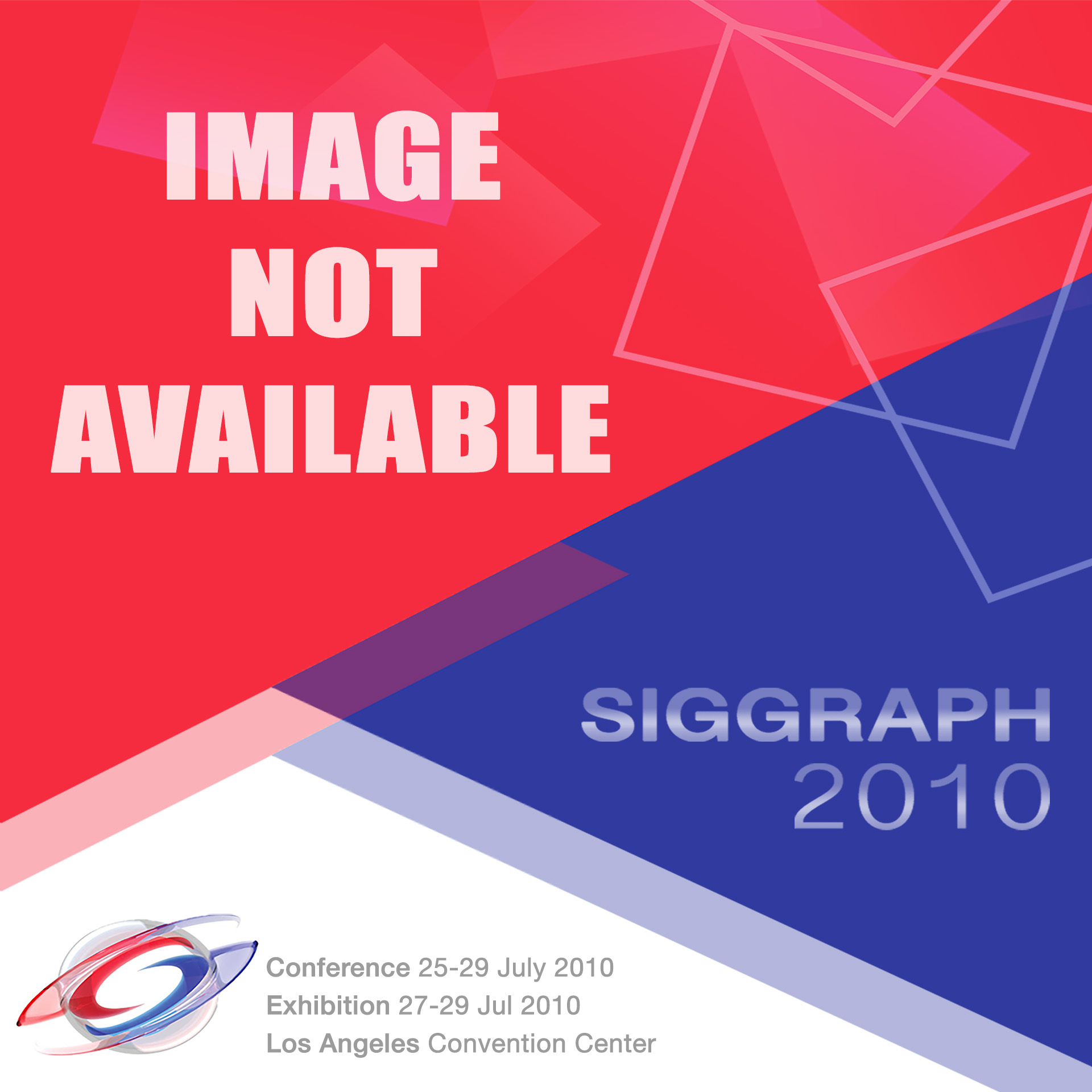“Interactive Generation of Human Animation with Deformable Motion Models” by Min, Chen and Chai
Conference:
Type(s):
Title:
- Interactive Generation of Human Animation with Deformable Motion Models
Session/Category Title: Editing Motion
Organizer(s):
Presenter(s)/Author(s):
Abstract:
This article presents a new motion model deformable motion models for human motion modeling and synthesis. Our key idea is to apply statistical analysis techniques to a set of precaptured human motion data and construct a low-dimensional deformable motion model of the form x = M(α, γ), where the deformable parameters α and γ control the motion’s geometric and timing variations, respectively. To generate a desired animation, we continuously adjust the deformable parameters’ values to match various forms of user-specified constraints. Mathematically, we formulate the constraint-based motion synthesis problem in a Maximum A Posteriori (MAP) framework by estimating the most likely deformable parameters from the user’s input. We demonstrate the power and flexibility of our approach by exploring two interactive and easy-to-use interfaces for human motion generation: direct manipulation interfaces and sketching interfaces.
References:
- Arikan, O. and Forsyth, D. A. 2002. Interactive motion generation from examples. ACM Trans. Graph. 21, 3, 483–490.
- Bishop, C. 1996. Neural Network for Pattern Recognition. Cambridge University Press.
- Brand, M. and Hertzmann, A. 2000. Style machines. In Proceedings of the ACM SIGGRAPH International Conference on Computer Graphics and Interactive Techniques (SIGGRAPH’00). 183–192.
- Catmull, E. and Rom, R. 1974. A class of local interpolating splines. In Computer Aided Geometric Design, Academic Press.
- Chai, J. and Hodgins, J 2005. Performance animation from low-dimensional control signals. ACM Trans. Graph. 24, 3, 686–696.
- Chai, J. and Hodgins, J. 2007. Constraint-Based motion optimization using a statistical dynamic model. ACM Trans. Graph. 26, 3, Article no.8.
- Grochow, K., Martin, S. L., Hertzmann, A., and Popović, Z. 2004. Style-Based inverse kinematics. ACM Trans. Graph. 23, 3, 522–531.
- Heck, R., Kovar, L., and Gleicher, M 2007. Splicing upper-body actions with locomotion. Comput. Graph. Forum 25, 3, 459–466.
- Howe, N., Leventon, M., and Freeman, W 1999. Bayesian reconstruction of 3D human motion from single-camera video. Adv. Neural Inform. Process. Syst. 12, 820–826.
- Kovar, L. and Gleicher, M. 2003. Registration curves. In Proceedings of the ACM SIGGRAPH/EUROGRAPHICS Symposium on Computer Animation. 214–224.
- Kovar, L. and Gleicher, M. 2004. Automated extraction and parameterization of motions in large data sets. ACM Trans. Graph. 23, 3, 559–568.
- Kovar, L., Gleicher, M., and Pighin, F. 2002. Motion graphs. ACM Trans. Graph. 21, 3, 473–482.
- Kwon, T. and Shin, S. Y. 2005. Motion modeling for on-line locomotion synthesis. In Proceedings of the ACM SIGGRAPH Symposium on Computer Animation. 29–38.
- Lee, J., Chai, J., Reitsma, P., Hodgins, J., and Pollard, N. 2002. Interactive control of avatars animated with human motion data. ACM Trans. Graph. 21, 3, 491–500.
- Lee, K. H., Choi, M. G., and Lee, J 2006. Motion patches: Building blocks for virtual environments annotated with motion data. ACM Trans. Graph. 25, 3, 898–906.
- Li, Y., Wang, T., and Shum, H.-Y. 2002. Motion texture: A two-level statistical model for character synthesis. ACM Trans. Graph. 21, 3, 465–472.
- Lourakis, M. 2009. Levmar: Nonlinear least squares algorithms in C/C++. http://www.ics.forth.gr/lourakis/levmar/.
- Molina Tanco, L. and Hilton, A. 2000. Realistic synthesis of novel human movements from a database of motion capture examples. In Proceedings of the Workshop on Human Motion. 137–142.
- Mukai, T. and Kuriyama, S. 2005. Geostatistical motion interpolation. ACM Trans. Graph. 24, 3, 1062–1070.
- Myers, C. S. and Rabiner, L. R. 1981. A comparative study of several dynamic time-warping algorithms for connected word recognition. The Bell Syst.Tech. J. 60, 7, 1389–1409.
- Ormoneit, D., Sidenbladh, H., Black, M., and Hastie, T. 2001. Learning and tracking cyclic human motion. Adv. Neural Inform. Process. Syst. 13, 894–900.
- Pavlović, V., Rehg, J. M., and MacCormick, J. 2000. Learning switching linear models of human motion. Adv. Neural Inform. Process. Syst. 12, 981–987.
- Rose, C., Cohen, M. F., and Bodenheimer, B. 1998. Verbs and adverbs: Multidimensional motion interpolation. IEEE Comput. Graph. Appl. 18, 5, 32–40.
- Safonova, A. and Hodgins, J. K. 2007. Construction and optimal search of interpolated motion graphs. ACM Trans. Graph. 26, 3, Article no. 106.
- Shum, H. P. H., Komura, T., Shiraishi, M., and Yamazaki, S. 2008. Interaction patches for multi-character animation. ACM Trans. Graph. 27, 5, Article no. 114.
- Sidenbladh, H., Black, M. J., and Sigal, L. 2002. Implicit probabilistic models of human motion for synthesis and tracking. In Proceedings of the European Conference on Computer Vision. 784–800.
- Treuille, A., Lee, Y., and Popović, Z. 2007. Near-Optimal character animation with continuous control. ACM Trans. Graph. 26, 3, Article no. 7.
- Witkin, A. and Kass, M. 1988. Spacetime constraints. In Proceedings of the ACM SIGGRAPH International Conference on Computer Graphics and Interactive Techniques (SIGGRAPH’88). 159–168.
- Yin, K., Loken, K., and van de Panne, M. 2007. Simbicon: Simple biped locomotion control ACM Trans. Graph. 26, 3, Article no. 105.





